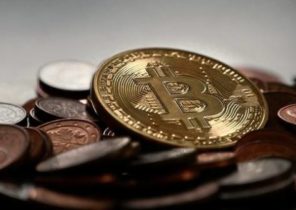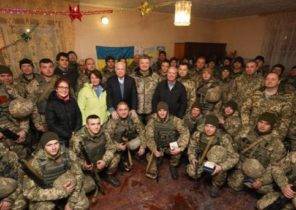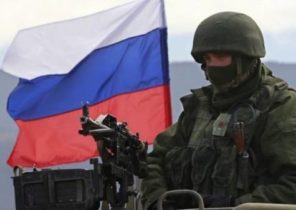
The Board of Directors of the Bank of Russia took a decision to keep the key rate unchanged at 10.00 percent per annum.
Following are analysts ‘ comments:
Dmitry Polevoy, ING
“It seems that the Central Bank was forced (due to initiated by the Ministry of Finance uncertainty) to prepare the market for the more rigid, relative to the expectations without taking into account the factor of the Ministry of Finance, monetary policy. This is confirmed by the fact that the assessment of inflation has remained very cautious, although consumer prices did not to the predictions.
…Between the lines you can read the promise: the purchase of foreign currency (at the initiative of the Ministry of Finance) promises a risk of not achieving the inflation target to 4 percent in 2017, which is inadmissible, especially when the economy is showing results above expectations. Therefore, a strict policy for a longer period — this is a natural reaction, so as not to lose credibility. And increase the risk of displacement of the first this year of a rate cut in March, or the scope reduction will be less if the exchange rate and inflation will make it in March.”
Olga Lapshina, Nordea
“Apparently, the Central Bank decided this time to be safe and to assess the future prospects of slowing inflation, including, in connection with the purchases of foreign currency on the open market by the Ministry of Finance. In the press release of the Central Bank of the Russian Federation welcomes the application by the Ministry of Finance the “transition budget rule” and noted its positive impact on maintaining macroeconomic stability.
Thus, to associate a tougher tone of the press release solely with the resumption of foreign currency purchases on the market by the Ministry of Finance, in my opinion, not worth it. Especially given the fact that the dynamics of consumer inflation in recent weeks was very reasonable. Also, historically, the Ministry of Finance has already entered the market, and evaluate the results from these purchases.
We will remind that in may-July 2015 the volume of daily purchases of the Ministry of Finance of the foreign currency on the open market was on average 2 times higher than announced today plans for February 2017. The price of oil on the market was significantly higher and stood at $64-65 per barrel. In this regard, we can assume that the CBR does not completely rule out the possibility and its own exit to the market to replenish the reserves in the next months, in this vein, the rhetoric of the press release looks more reasonable. It is also possible that the regulator transfers the reduction in the rate for the second quarter in connection with the desire to assess the future prospects of the dynamics of oil prices and, possibly, the first data harvest in 2017, because a substantial part of the slowing of inflation in 2016, according to the Central Bank, is associated with a record harvest of agricultural products, which could be a “time factor”.
Vladimir Evstifeev, Bank Zenit
“The meeting of the Bank passed in the expected way. The regulator has left the size of the key rate at 10 percent. Inflationary rhetoric has not changed: the annual rate of consumer price growth slowed, however, the risks of achieving the target level of 4 percent in the current year remain elevated. The phrase on the reduction potential of the reduction of the key rate is largely unexpected and is probably associated with the resumption of purchases of foreign currency. Thus, the probability of easing of interest rate policy in March significantly reduced.”
Irina Lebedeva, URALSIB
“The rhetoric of the Central Bank has changed, it clearly gives to understand that in March interest rates have nothing to expect. I believe this is directly related to the intervention of the Ministry of Finance: the amount of 113 billion rubles together with a structural surplus of liquidity in the amount of slightly less than 200 billion (according to the Central Bank) means growth in half, so the net cash inflow is sensitive, and this effect will accumulate.
In a press release, the Central Bank pays attention to the comment about the fiscal rule. I believe that the intervention announced by the Ministry of Finance, a temporary measure — until then, until a new budget rule. In the form of the intervention is announced now, I do not think that the scheme is viable in the long term: if we assume that the price of oil stable, the ruble at the monthly intervention will be weaker, and monthly at the same price of oil will have to buy more, and the rouble will be weaker. On a small period of time this scheme (interventions) is working on a large — no, so there must be another budget rule”.
Valery Vaisberg, BK Region
“The regulator expected kept the key rate’s level, however, have toughened rhetoric.
The most important change was the Declaration in support of the decision of the Ministry of Finance to begin the purchase of foreign currency in accordance with the budget rule, and the reduction potential of the reduction of the key rate in the first half of 2017.
In my opinion, the decision to keep oil revenues (and hence high budget deficit), combined with the devaluation impact of the operations of the Ministry of Finance, in a natural way reduced the chance of easing monetary policy.
Thus, for me, the decision of the Central Bank of the Russian Federation in General were expected”.
Stanislav Murashov, Raiffeisen
“The decision is expected. In General, the tone of the press release is typical for napornogo hearing, the arguments that CB has provided, in General, fit into the rhetoric of past statements.
Added passage that the intervention will not create obstacles to achieve the inflation target. But there is a risk that CBA may not achieve the goal. In General, disinflation is due to temporary factors.
The Central Bank maintains conservative rhetoric, she even tightened since the last meeting.
Still we believe that there are factors the fact that inflation might not reach 4 per cent, mainly on the part of the course is preinflation pressure due to intervention begins to recover weak consumer demand compared to last year. It all together will create additional risks. Therefore, we believe that the following solutions be careful.
Before the basic scenario assumed a rate reduction in March, will now have to shift over the longer term”.
Mr Miklashevskii, Danske Bank
“As we noted earlier, the RF Central Bank more cautious in cutting rates in the first half, although the regulator says that there is no risk due to currency purchases.
It seems that the CBR is satisfied better than expected, macroeconomic indicators and GDP, while inflation was on the right trajectory to 4 percent by the end of 2017. The Central Bank also achieves the objectives in relation to the models he wants: consumers are saving more, despite the increase in real wages.
Markets and the ruble perceive the rhetoric of the CBR as hard. The regulator notes the high uncertainty in the external environment. It is not surprising that the Central Bank is worried about it, despite the rise in oil prices. The fed’s decision, which depend on the policy of trump, and the situation in China is important for the Central Bank, which has no objection to only a small weakening of the ruble, and not to the strong depreciation of.
The ruble reacted positively to the decision of the CBR, despite today’s announcement of the Ministry of Finance of the Russian Federation on volumes of purchase of currency”.
Alexander Losev, MC Sputnik-capital management
“Nobody expected that the Bank of Russia will cut rates, but the surprise was the statement that the potential reduction in the key rate in the 1st half of 2017 decreased. In a press release appeared noting that “foreign policy and economic uncertainty remains high”, which reflects the General concerns of the markets in respect of the rate hike cycle, the fed. But the most important factor was the unexpected release of the Ministry of Finance on the currency market, which increases the probability of a possible devaluation, speculative attacks on the ruble and the new surge of inflationary expectations. Probably why the Bank of Russia to ensure the relative stability of the ruble, will now be forced to maintain a neutral position in relation to the foreign exchange market and nothing to do in the area of monetary policy.”
William Jackson, Capital Economics
“The decision was more hawkish than I expected given the recent decline in inflation and expectations, economic statistics, reflecting the weakness in consumer spending. This may be partly due to fears that intervention (purchase of currency) will weaken the ruble, but I don’t think it fears materialists. And we are still waiting for a further decline in inflation this year. Against this background, we believe that the Central Bank will resume the easing cycle (possibly in March), but be very careful.”
Natalia Shilova, Binbank
“The decision to maintain the key rate of the Central Bank on the background of the beginning operations of the Ministry of Finance for the purchase of foreign currency was expected. These transactions bear the risks of increased pressure on the ruble, if their volumes will be higher than expected by the market. Under these conditions, the regulator did not further increase the volatility of the markets and the pressure on the ruble by reducing rates. We see the probability that at the next meeting in March, the Central Bank will return to lower rates amid record low inflation, but the decision of the Ministry of Finance to conduct budget rules may force the Bank to keep rates high for a longer time.
In our view, the risk of inflation has decreased, and the Central Bank is also noted. This is reflected in the pace of price growth, which we estimate by the end of January will be close to 5 percent (that is, the downtrend will continue) and in the inflation expectations of the population, which in December declined relative to the level of November. With regard to the external environment — high oil prices contribute to the preservation of favourable estimates for inflation.
However, the key risk at the moment is the intervention of the Ministry of Finance, which will be about $2 billion in the first month and can significantly increase in case of further growth of oil prices that will lead to an increase of liquidity and to limit the prospects of strengthening of the ruble. Accordingly, the Central Bank will be forced to further sterilize the liquidity, and the tone of the statement, the Central Bank has become much tougher — the regulator noted that the prospects of a rate cut in 1H decreased.
We believe that by the end of 2017 the key interest rate will fall to 8.5-9.0 per cent. This score is the sum of our estimate of inflation (4.5 percent by the end of the year) — we expect that on the background of the favourable intervention of the Ministry of Finance will only hinder the strengthening of the ruble against the background of growing oil prices, but will not be able to provoke him a sharp weakening. Accordingly, weak economic growth and a stable ruble will contribute to maintaining low inflation and Central Bank will open opportunities to further reduce rates”.
Dmitry Lepetikov, VTB24
“The Bank of Russia, as expected in the market, kept its key rate at 10 percent, he remained faithful to his policy. However, review this decision allows to hope that at the next meeting, the rate will be reduced, which will make credit resources more accessible for business and for people. Speaking in favor of this and record low inflation, and stability of the ruble”.







